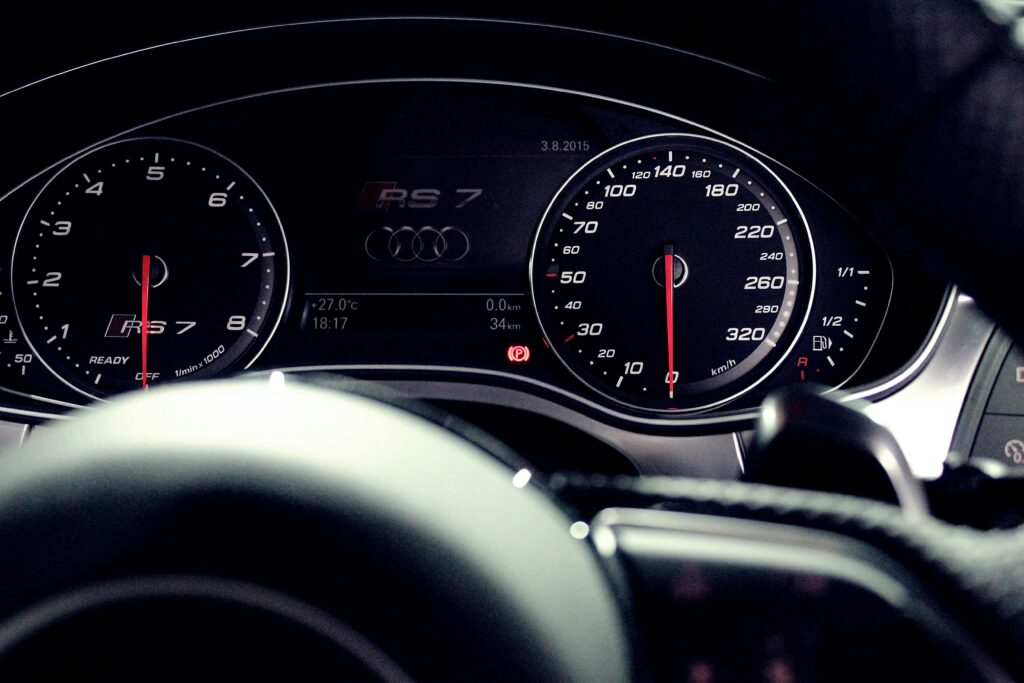
Introduction
The dashboard of your car serves as a vital communication hub, providing essential information about your vehicle’s health and performance. From warning lights to indicator symbols, each icon serves a specific purpose, alerting you to potential issues or maintenance requirements. Understanding these dashboard signs is crucial for ensuring your safety on the road and preserving the longevity of your vehicle. In this article, we’ll decode the most common dashboard signs, empowering you to interpret them accurately and take appropriate action.
Read more articles here: https://learntodrivesg.com/blog/
Engine Warning Light
The engine warning light, often depicted as an outline of an engine, signals potential issues with your vehicle’s engine system. It can indicate a wide range of problems, from minor issues like a loose gas cap to more serious issues like engine misfires or overheating. When the engine warning light illuminates, it’s essential to seek professional assistance to diagnose and address the underlying cause promptly.
Battery Warning Light
The battery warning light, usually depicted as a battery icon, indicates problems with your car’s charging system. It may signify a malfunctioning battery, faulty alternator, or issues with the electrical system. Ignoring this warning sign can lead to a dead battery and potential breakdowns. If the battery warning light illuminates, have your vehicle inspected by a qualified mechanic to identify and rectify the issue.
Oil Pressure Warning Light
The oil pressure warning light, depicted as an oil can icon, alerts you to low oil pressure in your vehicle’s engine. Low oil pressure can lead to inadequate lubrication, resulting in engine damage and overheating. If this warning light illuminates, stop your vehicle safely as soon as possible and check the oil level. Add oil if necessary and have your vehicle inspected by a professional to determine the cause of the low oil pressure.
Brake System Warning Light
The brake system warning light, often depicted as an exclamation mark inside a circle, indicates issues with your car’s braking system. It may signal low brake fluid levels, worn brake pads, or a malfunction in the braking system. If the brake system warning light illuminates, it’s crucial to have your brakes inspected immediately to ensure they are functioning correctly and maintain your safety on the road.
Tire Pressure Monitoring System (TPMS) Warning Light
The TPMS warning light, typically depicted as an exclamation mark inside a horseshoe-shaped symbol, alerts you to low tire pressure in one or more of your vehicle’s tires. Insufficient tire pressure can impact how your vehicle handles, its fuel efficiency, and the wear on your tires. If the TPMS warning light illuminates, check your tire pressure and inflate any underinflated tires to the recommended levels. If the warning light continues to be illuminated, it’s advisable to have your tires examined for any signs of leaks or damage.
Check Engine Light
The check engine light, often depicted as an outline of an engine with the word “CHECK” or “SERVICE,” indicates a variety of engine-related issues. These can range from minor problems like a loose gas cap to more serious issues like engine misfires or emissions system malfunctions. If the check engine light illuminates, it’s essential to have your vehicle diagnosed by a qualified mechanic to identify and address the underlying cause.
ABS Warning Light
The ABS (Anti-lock Braking System) warning light, depicted as the letters “ABS” inside a circle, alerts you to issues with your vehicle’s ABS system. ABS helps prevent wheel lock-up during sudden braking, enhancing vehicle stability and control. If the ABS warning light illuminates, it may indicate a malfunction in the ABS system, requiring inspection and repair by a qualified technician.
Coolant Temperature Warning Light
The coolant temperature warning light, often depicted as a thermometer or a thermometer submerged in fluid, indicates that your engine is overheating. This warning sign should not be ignored, as overheating can lead to severe engine damage. If the coolant temperature warning light illuminates, pull over safely, turn off the engine, and allow it to cool down before checking the coolant level. Add coolant if necessary and have your vehicle inspected for leaks or other cooling system issues.
Transmission Temperature Warning Light
The transmission temperature warning light, depicted as a gear or transmission symbol, alerts you to high transmission fluid temperatures. Excessive heat can accelerate wear and damage internal transmission components. If the transmission temperature warning light illuminates, reduce your speed and avoid towing heavy loads. Pull over safely, allow the transmission to cool down, and have your vehicle inspected by a professional to diagnose and address the underlying cause.
Traction Control System (TCS) Warning Light
The traction control system warning light, often depicted as a car with wavy lines beneath it, indicates issues with your vehicle’s traction control system. TCS is designed to prevent wheel spin when accelerating on slippery surfaces. If the TCS warning light comes on, it could signal a malfunction in the system, potentially compromising vehicle stability and traction. Have your vehicle inspected to diagnose and rectify the issue, especially if driving conditions are hazardous.
Electronic Stability Control (ESC) Warning Light
The electronic stability control warning light, depicted as a car with skid marks behind it, alerts you to issues with your vehicle’s electronic stability control system. ESC helps maintain vehicle stability and control during sudden maneuvers or loss of traction. If the ESC warning light illuminates, it may indicate a malfunction in the system, compromising vehicle stability and safety. Have your vehicle inspected to identify and address any ESC system issues promptly.
Airbag Warning Light
The airbag warning light, often depicted as a person sitting in a seat with an airbag deploying in front of them, indicates issues with your vehicle’s airbag system. Airbags are crucial for occupant safety during a collision, and a malfunctioning airbag system may fail to deploy when needed. If the airbag warning light, have your vehicle inspected by a qualified technician to rectify any issues with the airbag system.
Emergency Mechanics in Singapore
Here are list of reputable mechanics in Singapore
- SG Mobile Mechanic: SG Mobile Mechanic offers 24/7 emergency roadside assistance and mobile car repair services across Singapore. Their team of experienced mechanics can handle various automotive issues, including battery replacement, tire changes, engine diagnostics, and minor repairs.
- RS Automotive Services: RS Automotive Services provides emergency roadside assistance and on-site car repair services throughout Singapore. They offer prompt response times and skilled mechanics equipped with the necessary tools and expertise to address common automotive emergencies.
- FA Recovery Services: FA Recovery Services specializes in emergency roadside assistance and vehicle recovery services in Singapore. Their team of trained technicians is available round-the-clock to assist with battery jump-starts, flat tire changes, and towing services.
- MK Vehicle Services: MK Vehicle Services offers emergency assistance and car repair services, including tire changes and engine diagnostics. Their skilled mechanics strive to provide efficient and reliable assistance to drivers in need.
- 24Hrs Car Battery Service: 24Hrs Car Battery Service specializes in emergency battery replacement services. They offer 24/7 assistance and can deliver and install new car batteries on-site across Singapore.
- CarZ Culture: CarZ Culture provides emergency roadside assistance, towing services, and mobile car repair solutions. Their team of experienced mechanics is equipped to handle a wide range of automotive emergencies promptly and efficiently.
Remember to save the contact information of your chosen emergency mechanic service provider in case of emergencies. Additionally, always prioritize safety when dealing with roadside breakdowns and follow proper procedures.
Conclusion
Understanding the various dashboard signs in your car is essential for maintaining vehicle safety and performance. By familiarizing yourself with these warning lights, you can promptly address any issues that arise on the road. Regular maintenance and timely repairs are key to keeping your vehicle in optimal condition and a safe driving experience. If you ever encounter a dashboard sign, don’t hesitate to seek assistance from a qualified automotive professional.





